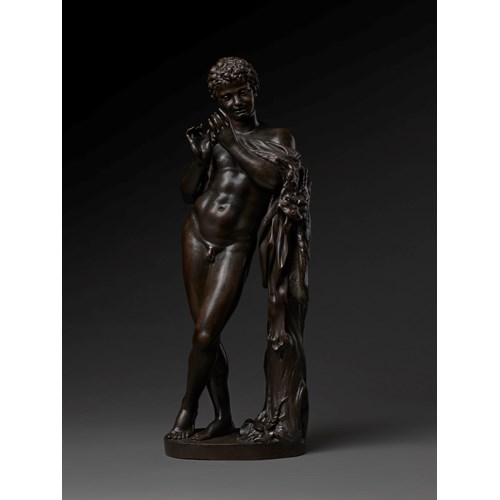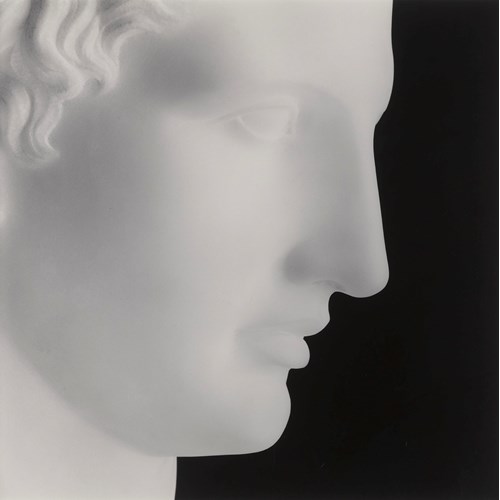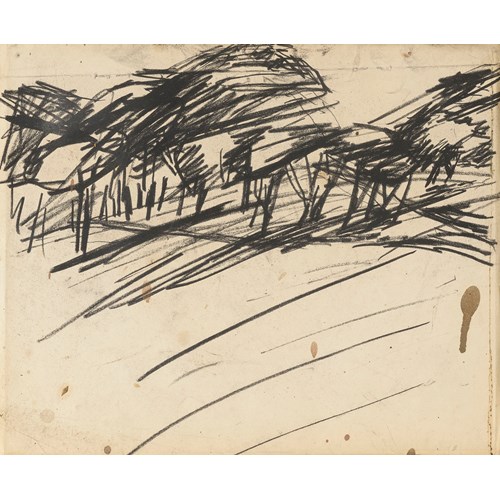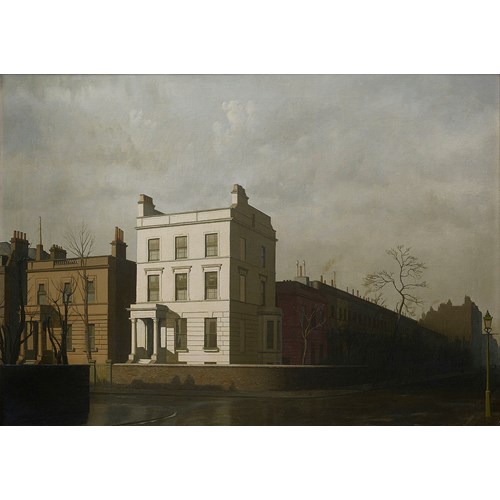Peter Turnerelli
Bust of Henry Grattan
Date 1813
Epoque Early 19th century
Medium Marble
Dimension 57.5 cm (22⁵/₈ inches)
The son of an Italian refugee. Turnerelli was born in Belfast, before moving to Dublin and then to London, where he trained as a sculptor at the R.A. In 1796, he returned to Italy to further his trade and it was there that he was deeply influenced by the work of Antonio Canova - to whom the softness and descriptive qualities of his sculpture is indebted. From 1797 to 1800 he taught modelling to the daughters of George III and was subsequently Sculptor-in-Ordinary to the Royal Family. This led to a large international royal and aristocratic clientele for whom he modelled busts such as those of George III (1810; Windsor Castle, Berks, Royal Col.), Arthur Wellesley, 1st Duke of Wellington (1815; London, India Office) and Louis XVIII (exh. R.A. 1816). He made a number of memorials for Westminster Abbey, Canterbury Cathedral and elsewhere, including the fine memorial to Robert Burns (1816; Dumfries). Socially he had great success in the circle of the Prince Regent and twice refused a knighthood.
Born in Dublin, in 1746, Henry Grattan was a brilliant politician and was known as 'the greatest of Irish orators'. An eloquent speaker and with his background as a lawyer, Grattan advocated the cause of Irish independence, Catholic emancipation, and free trade. He is remembered for the enthusiasm with which he demanded Ireland’s right to status as an Independent Nation. Despite his determination for the legislative freedom of the Irish parliament, he always insisted that Ireland would remain linked to Great Britain by a common crown and by sharing a common political tradition, and furthermore, unlike many of his colleagues, Grattan also supported the creation of Catholic MPs.
As leader of the parliamentary 'patriot' group - who demanded independence from Westminster - he became a hero in the 1780s when he persuaded Britain to grant legislative powers over Ireland exclusively to the Dublin parliament - in what became known as ‘Grattan’s Parliament’ in his honour. Grattan opposed the Act of Union 1800 that merged the Kingdoms of Ireland and Great Britain, but later sat as a member of the United Parliament in London.
Grattan died in 1820 at his home in Portman Square and was buried in Westminster Abbey close to the tombs of Pitt and Fox. His statue is in St Stephen’s Hall in the Palace of Westminster. English writer, Sydney Smith said of Gratton soon after his death: "No government ever dismayed him. The world could not bribe him. He thought only of Ireland; lived for no other object; dedicated to her his beautiful fancy, his elegant wit, his manly courage, and all the splendour of his astonishing eloquence."
The present bust was acquired by Grattan's contemporary Charles Kinnaird, 8th Lord Kinnaird. An important art collector and whig politician, Kinnaird was highly educated, having studied at Eton, and the universities of Edinburgh, Cambridge, Glasgow and Geneva. According to Millar, 'From that time until the death of his father in 1805 he voted consistently with the Foxite whigs, and rendered valuable aid to the party in the repeated attacks made upon the Addington ministry'. Kinnaird was an Italophile, who was in Venice in 1805 when he learned of his father's death. He was a prolific art collector who assembled one of the great Scottish collections of antique statuary and pictures. Many of his paintings, which included works by Rubens, Titian and Poussin, had come from the collection of Philippe Égalité, Duc d'Orléans.
This marble bust, made for Lord Kinnaird, is purported to have been made in eleven hours when Turnerelli was on a visit to Grattan at Tinahinch, and was subsequently exhibited at the Royal Academy in 1813 as number 917. Since then it has remained in the family collection at Rossie Priory. A plaster cast of the bust is held by the National Portrait Gallery, inventory no. NPG 1341.
Date: 1813
Epoque: Early 19th century
Medium: Marble
Signature: Signed and dated ‘P. Turnerelli/Fecit/1813’ (on the side of the socle).
Dimension: 57.5 cm (22⁵/₈ inches)
Provenance: Provenance:
Charles Kinnaird, 8th Lord Kinnaird (1780-1826)
And by descent to the previous owners, until 2022
Literature: Literature:
Richard Walker, Regency Portraits, National Portrait Gallery of Scotland, Edinburgh, 1985, p. 223.
J. Gilmartin: ‘Peter Turnerelli, Sculptor, 1774–1839’, Bulletin of the Irish Georgian Society, 10/4 (1967), pp. 2–19
Fintan, C., The Irish Face: Redefining the Irish Portrait, 2004, p. 147
Saywell, David; Simon, Jacob, Complete Illustrated National Portrait Gallery Catalogue, 2004, p. 260
Exhibition: Exhibited:
Royal Academy, London, 1813, no. 917
Plus d'œuvres d'art de la Galerie







_T638354709335648178.jpg?width=500&height=500&mode=pad&scale=both&qlt=90&format=jpg)

